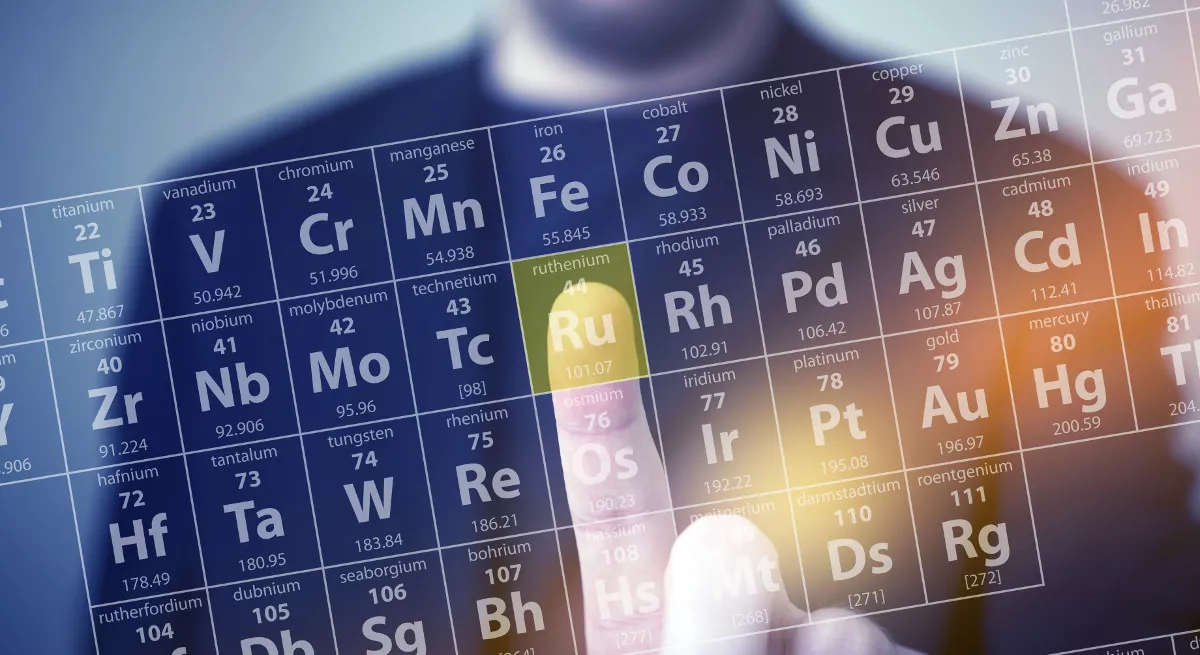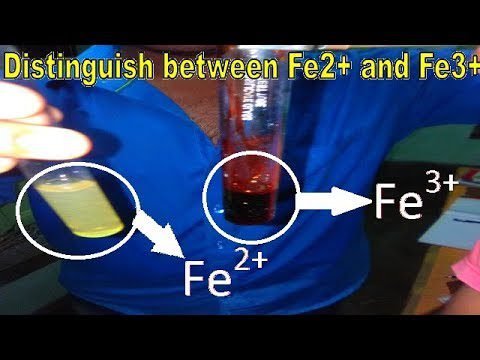
Fajan’s rule tells the covalent character in an ionic bond. No bond in chemistry is 100% ionic and a slightly covalent character is present in the ionic bond. Covalent character in ionic bond means slightly sharing of electrons start after the formation of ionic bond. As we know that the ionic bond is formed by the complete transfer of electrons, on the other hand, the covalent bond is formed by the mutual sharing of electrons.
Fajan’s rule also tells the melting and boiling point of compounds and also explains the solubility. For example, the covalent bond has a low melting and boiling point as compared to the ionic bond so the greater the covalent character in the compound, the lower the melting and boiling point. The covalent compound has less solubility as compared to ionic so covalent character increase, solubility decrease.
Ionic Compound
The ionic bond is formed between a metal and a non-metal. It means that the ionic bond is formed between low ionization energy and high electron affinity. Consider metal sodium which has electronic configuration 2,8,1. It easily loses its valance electron and attains the noble gas configuration of neon 2,8.
Na → Na+ + 1e–
Another atom is chlorine (2,8,7) which is a non-metal and it gains an electron to achieve the electronic configuration of inert noble gas, Argon (2,8,8).
Cl + 1e– → Cl–
Sodium loses an electron and attains the noble gas configuration and gets stability. Similarly, the chlorine gains an electron and attains the noble gas configuration, and gets stability. Now both the cation (Na+) and anion (Cl–) attracts each other and this force is called the electrostatic force of attraction and an ionic compound (NaCl) is formed.
Na+ + Cl– → NaCl
No Bond In Chemistry Is 100% Ionic. Why?
In the formation of an ionic compound, the atoms are very close to each other, and slightly sharing is started. The electronic cloud of anion is disturbed and gets de-shape or de-formed.

This slightly sharing of electrons toward cation or polarization of anion is called covalent character in an ionic bond so, no bond is 100% ionic in nature.
Why Some Covalent Character In Ionic Bond?
The power of cation to polarize the anion is called the polarizing power of cation. In short, we can say that,
- Polarization of anion
- Polarizing power of cation
“The greater the polarization of anion, the greater will be the covalent character. The greater the polarizing power of cation, the greater will be the covalent character”
Polarizing Power of Cation
1. Size of Cation
The smaller the cation, the greater the polarizing power, and the greater will be the covalent character.
Examples in Terms of the Size Factor
The order of greater polarizing power on the basis of size is:
Li+ > Na+ > K+ > Rb+
Be2+ > Mg2+ > Ca2+ > Sr2+
The smaller the cation, the greater the polarizing power.
2. Charge of Cation
The greater the charge of cation, the greater the polarizing power, and the greater will be the covalent character.
Example in Terms of the Charge Factor
The order of greater polarizing power on the basis of the charge is:
K+ < Ca2+
Na+ < Mg2+ < Al3+
The greater the charge on cation, the greater the polarizing power.
3. Pseudo Noble Gas Configuration
Those cations which have pseudo noble gas configuration (ns2, np6, nd10) have a very high covalent character.
- Cu29 = 1s2, 2s2, 2p6, 3s2, 3p6, 4s1, 3d10
When copper lose one electron, copper cation is formed, Cu+ having configuration is 1s2, 2s2, 2p6, 3s2, 3p6, 3d10. So, the Cu+ has very high polarizing power and a very large covalent character. Similarly, as we move down the group, Ag+ and Au+ also obey pseudo noble gas configuration.
- Zn30 = 1s2, 2s2, 2p6, 3s2, 3p6, 4s2, 3d10
When zinc loses its two-electron, zinc cation is formed, Zn2+ having configuration is 1s2, 2s2, 2p6, 3s2, 3p6, 3d10. So, the Zn2+ has very high polarizing power and a very large covalent character. Similarly, as we move down the group, Cd2+ and Hg2+ also obey pseudo noble gas configuration and have a very high covalent character.
Remember that the cations Cu+, Ag+, Au+, Zn2+, Cd2+, Hg2+ has very high polarizing power and high covalent character because they obey pseudo noble gas configuration.
Polarization of Anion
1. Size of Anion
The larger the size of the anion, the greater the polarization, and the greater will be the covalent character.
2. Charge of Anion
The greater the charge on an anion, the greater the polarization, and the greater will be the covalent character.
Summary of Fajan’s Rule
According to Fajan’s rule, the covalent character is increased when:
- Smaller the size of cation
- Larger the charge on the cation
- Cation Cu+, Ag+, Au+, Zn2+, Cd2+, Hg2+ having pseudo noble gas configuration
- Larger the size of an anion
- Larger the charge on the anion
Application of Fajan’s Rule
1. Solubility
The larger the covalent character, the lower the solubility.
Covalent character ↑ = Solubility ↓
2. Melting & Boiling Point
The larger the covalent character, the lower the melting and boiling point.
Covalent character ↑ = Melting & Boiling point ↓
3. Color
The larger the covalent character, the larger the color imparting nature.
Covalent character ↑ = Color imparting ↑
FAQs – Frequently Asked Questions
Which one has high covalent character NaCl, KCl, RbCl?
- The anion is the same in given compounds
- The cation is different and as we know that when we move from top to bottom in a group, the size is increase. The order of size of cation is Rb+ > K+ > Na+. According to Fajan’s rule, the smaller the size of a cation, the greater its polarizing power, and the greater will be the covalent character.
So, the order of covalent character will be:
NaCl > KCl > RbCl
Which one has the highest covalent character BeCl2, MgCl2, or CaCl2?
- The anion is the same in given compounds
- The cation is different. The order of size of cation is Ca2+ > Mg2+ > Be2+. According to Fajan’s rule, the smaller the size of a cation, the greater is its polarizing power, and the greater will be the covalent character.
So, the order of covalent character will be:
BeCl2 > MgCl2 > CaCl2
Which one has the highest covalent character NaCl, NaBr, or NaI?
- The cation is the same in given compounds
- The anion is different. The order of size of anion is Cl- < Br- < I-. According to Fajan’s rule, the greater the size of an anion, the greater its polarizability, and the greater will be the covalent character.
So, the order of covalent character will be:
NaCl < NaBr < NaI
Which will have a higher melting point BeF2, and MgF2?
- The anion is the same in the given compounds
- The cation is different. The order of size of cation is Mg2+ > Be2+. The smaller the cation, the greater will be the covalent character. Thus the order of greater covalent character is BeF2 > MgF2.
- The larger the covalent character, the smaller will be the melting and boiling point of the compounds.
So, the order of melting point will be:
BeF2 < MgF2
Which will have a higher melting point of CaCl2, and CaBr2?
- The cation is the same in the given compounds
- The anion is different. The order of size of anion is Cl- < Br-. The larger the anion, the greater will be the covalent character. Thus the order of greater covalent character is CaCl2 < CaBr2.
- The larger the covalent character, the smaller will be the melting and boiling point of the compounds.
So, the order of melting point will be:
CaCl2 > CaBr2
Which will have a higher melting point NaCl, or CuCl?
- The anion is the same.
- The cation is different, but we cannot compare the size of the cation because Copper ions obey the pseudo noble gas configuration. So, CuCl has a high covalent character.
- The greater the covalent character, the lower will be the melting point.
So, the order of melting point will be:
NaCl > CuCl
Which is more soluble Fe(OH)3 or Fe(OH)2?
- The cation and anion are the same in the given compounds.
- In Fe(OH)2, the oxidation state of Fe is +2.
- In Fe(OH)3, the oxidation state of Fe is +3.
- The greater the charge on cation, the greater will be the covalent character.
- The greater the covalent character, the lower will be the solubility. So, Fe(OH)2 has high solubility.
Which one has the darkest color among AgF, AgCl, AgBr, AgI?
- The cation is the same.
- The anion is different and the order of size of the anion is F < Cl < Br < I. The greater the size of the anion, the greater will be the covalent character.
- Greater the covalent character, darkest the color. So, AgI has a dark color.
Limitation of Fajan’s Rule
With the help of Fajan’s rule, we can compare the covalent character between two compounds but it does not tell the percentage of ionic or covalent characters like how many covalent characters are in an ionic bond so this is the limitation of Fajan’s rule.



Leave a Reply